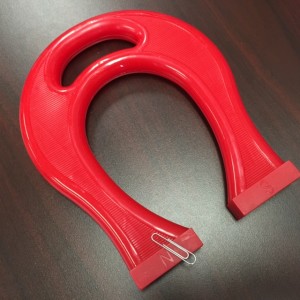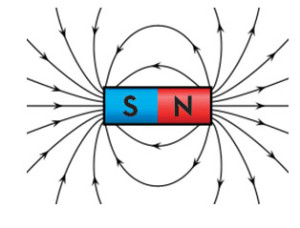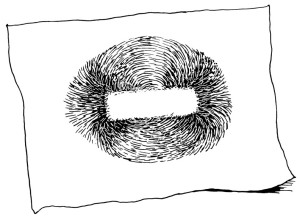What is a Magnetic Field?
“A magnetic field is the area around a magnet, magnetic object, or an electric charge in which magnetic force is exerted.”
Huh?
Let’s put it this way. The invisible area around a magnetic object that can pull another magnetic object toward it or push another magnetic object away from it is called a magnetic field. It’s kind of like those invisible “force fields” that surround an object with invisible power in sci-fi movies and books.
Sounds like magic, right? So how does it work? See below for the five questions (and answers!) you’ve always wanted to ask about magnetic fields:
- What makes a magnetic field?
Magnetic fields are created by moving electric charge. When electrons, which have a negative charge, move around in certain ways, a magnetic field can be created. These fields can be created inside the atoms of magnetic objects or within wires (electromagnetism).
- How do we measure a magnetic field?
We measure a magnetic field by its strength and by the direction it points.
Every magnetic field is a bit different. Some magnetic fields are large, some are strong, some are small, and some are weak. For example, the Earth’s magnetic field is large, but weak.
Physical proximity (how close or far away) really counts in magnetism. The closer you stand to a magnet, the stronger the magnetic field will be. The farther away you are from a magnet, the weaker the magnetic field becomes. (A magnetic field never ends – it simply gets weaker and weaker the farther away you go, in principle, even to infinity!)
Suppose you set a paperclip on a table. If you were to hold a magnet and stand on the other side of the room from the table, the paperclip would respond to the magnetic field around the magnet (although probably not visibly), but the response would be very, very weak. However, if you were to walk closer, place the magnet on the table, and slide it toward the paperclip, there would be a point where the paperclip would jump off the table and fly through the air to the magnet! At that point, the magnetic field would be strong enough to overcome the forces of gravity and friction which were preventing the paperclip from moving before. (This is also a great example of how magnetic forces can cause motion!)
3. What units do we use to measure the strength of a magnetic field?
The strength of a magnetic field, called the magnetic flux density, is measured in units of Tesla (International System of Measurement or SI). There are also many other units and terms used in the field of electromagnetism, including Weber, Maxwell, Gauss, and even 109 gamma!
4. How can we “see” the forces in a magnetic field?
Sometimes we draw field lines to show the direction of the forces at different locations within a magnetic field. Field lines exit the magnet at its north pole, travel around in the air, and re-enter the magnet through its south pole. Field lines don’t start in one place and stop in another; magnets travel in “closed paths,” which means they will continue to travel the same path again and again.
Remember that the magnetic field is present everywhere around the magnet, not just along the field lines that we draw, but even between the field lines. The lines simply help us visualize the direction the field is flowing at various locations around the magnet and even within the magnet.
A great way to see field lines within a magnetic field is to use iron filings. Set a bar magnet down on a table and cover it with a sheet of paper. Then sprinkle the filings onto the paper and watch as they form patterns of lines that are close together at one pole, more spread out as they leave that pole, and close together again at the magnet’s other pole. The filings are lining up along the bar magnet’s field lines!
5. Do magnetic forces penetrate more than just air?
Yes! In the iron filings experiment, the magnetic forces from the bar magnet affected the filings through a sheet of paper. Your fridge magnets do the same thing when they are used to display a piece of paper. Picking up a chain of paperclips with a magnet shows us that magnetic fields can even extend through steel, from paperclip to paperclip!
Guess what? The forces of a magnetic field can penetrate water too, and many other substances…even your hand!
Magnetic forces can penetrate water…and lots of other substances too!

Magnetic forces penetrating a hand! (Magnet Wand and North-South Bar Magnet shown. Activity from Chunky Magnet Set.)
Tags: Bar magnet , Dowling Magnets , horseshoe magnet , magnetic field , magnetic field lines , Magnetic Force Field , magnetic objects , measure a magnetic field
Share This:







That’s super cool i didn’t know magnets involve so much knowledge!!!!!!